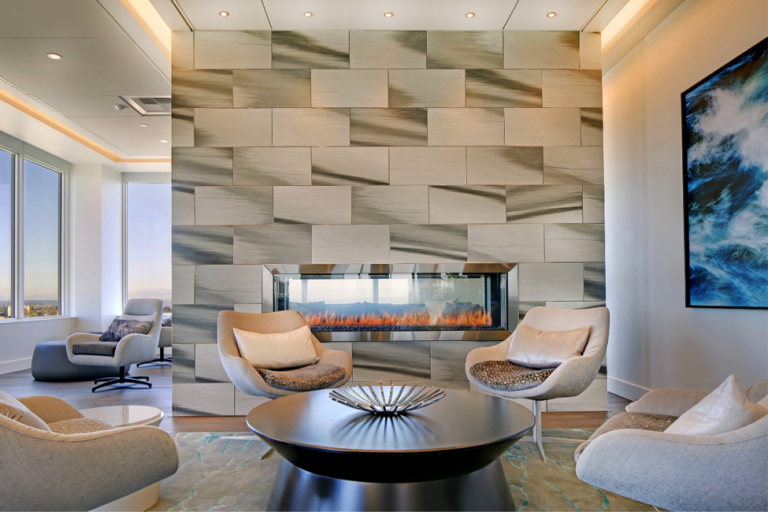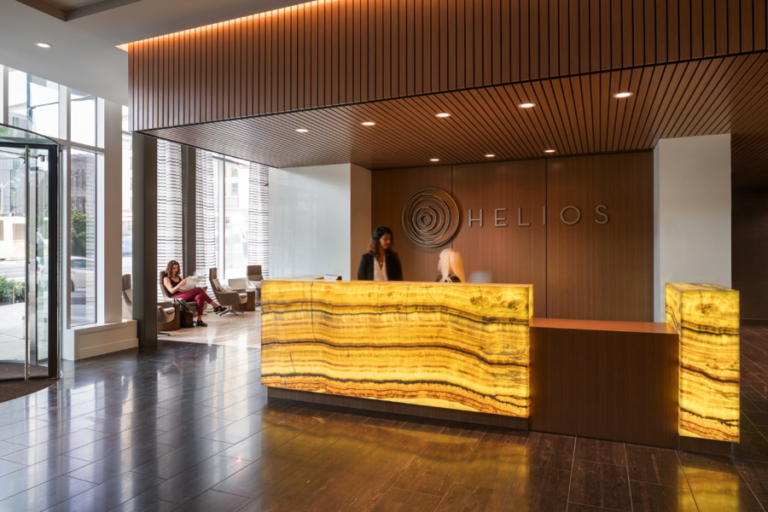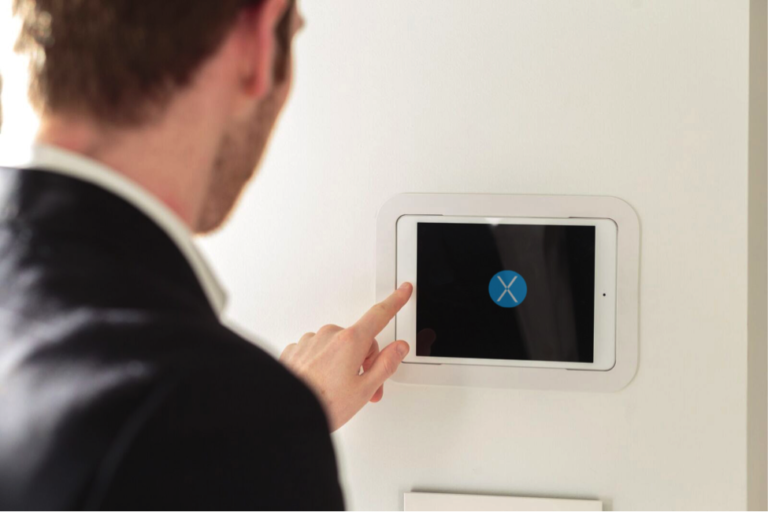By Bernadette Kelly
Bernadette Kelly NCIDQ, LEED AP is Weber Thompson’s Interior Design Principal. She has over 20 years of architectural and interior design experience – ranging from high-end hotels and multifamily residences to functional workspaces and successful retail environments.
Tour any of Seattle’s newest residential high rise projects and it becomes crystal clear: they are rapidly rising to meet the level of luxury and service one expects at the finest of hotels.
While the hospitality design industry is trying to create a ‘home away from home,’ multifamily residential projects are being branded as ‘luxurious and hospitality inspired.’ They often include select packages and amenities that are much closer to what one would see in a five star hotel. Hotel 1000 / Madison Tower was the precursor to this in 2006, followed by the Four Seasons two years later. These were Seattle’s first condominiums, within the same building as a hotel, to offer residents access to all the hotel’s services and amenities. Not surprisingly, in this hyper-competitive residential market many residential-only projects are following suit. It seems to be working, as projects such as Nexus, a 382-condominium tower that is currently under construction in downtown Seattle, experienced record setting reservations well before the start of construction, and Helios, a 400-apartment tower that recently opened, has commanded strong rental rates.
Here’s a look at five ways luxury multifamily high rises are emulating the top hotels in town.
Amenities
Stepping into many high-end residential buildings bears a striking resemblance to the sense of arrival you might feel at a luxury hotel. Lobbies set a specific tone for your experience whether you’re a full-time resident or merely a guest for a few days. Soaring ceilings, prominent concierge desks and elegant rest areas for visitors to thumb through magazines are just the tip of the iceberg. Upstairs, lounge areas, business centers (now termed co-working lounges), club rooms, sky lounges, theater rooms, spas and fitness centers expand the sense of opulence and convenience inhabitants have come to expect. After all, residents have chosen an all-inclusive residential community in the heart of downtown rather than a house in the suburbs for a reason. They expect a home that encourages social gatherings and chance meetings; one that enhances and eases the burden of their busy urban lifestyle.
Residential rooftop lounges now exploit their amazing views of the city with generous landscapes, fireplace-centric gathering areas, outdoor BBQs, furniture for lounging and sun bathing and oftentimes a central water feature. While these spaces are extensions of the urban home, they are also venues for entertaining, allowing the building’s residents to live larger than their unit. More properties are incorporating catering kitchens adjacent to amenity spaces such as private dining rooms, party rooms and speakeasy lounges which enable residents to host large gatherings. LUMA, a 168-unit condominium tower completed last fall on First Hill, hosted a large wedding in the entire rooftop lounge and deck within a month of opening.

Amenity space at LUMA Condominiums / Photo: Tucker English
Services
In a world of mobile devices and automated services, there’s still nothing quite like the human touch. In a high end residential building, residents want peace of mind. A concierge as your advocate is a huge selling point! Many high-rises incorporate hotel-like reception desks for 24-hour concierge service and back of house areas programmed to accommodate deliveries of refrigerated groceries and packages. Providing space to support such services contributes to the experience and the overall value for the residents. Integrating support areas for such service elements are proving to pay off. Reviews for Helios Apartments, developed by Equity Residential, on Yelp and Google say, “This is like the Fairmont of residences, truly high-end service and amenities. Here you get the whole package, extraordinary views, superb staff, and exquisite decor” and “this is like living in a five-star hotel, the service here is amazing”.

Lobby at Helios Apartments / Photo: Andrew Pogue Photography
Technology
Great face-to-face customer service is important, but these days offering mobile customer service is just as essential. Hotels and high-rise residences are no exception. In the hospitality industry, guests can share group bookings, check-out and pay their folio through mobile apps. Complimentary wi-fi is almost always available to guests and residents. Luxury residences such as Nexus, offer several ways in which residences can control and access various aspects of their home with an interactive touch screen. Residents can manage their home climate, monitor utility usage, book amenity spaces or pay dues or fees.

Sirqul Touch Pad at Nexus Condominiums / Photo: The Burrard Group
A Bold Brand
Luxury residential buildings have embraced the necessity of a strong brand that resonates throughout the architecture, interior design and landscape. The ‘story’ behind the design is paramount and can mean the difference between ‘housing’ or a true ‘home.’
Creating a geographically relevant brand is also how residential buildings are moving towards hospitality. Contextual designs that reflect the personality of a building’s neighborhood and residents, featuring local art, locally sourced materials and curated amenities is a common approach that both hotels and multi-family residential designers use to give projects a regional aptitude.
Quality of Finishes
These days, the level of finishes in luxury high-rise residential are essentially the same as those found in luxury hotels. Obvious design elements such as interior finishes, art, furnishings, signage and wayfinding elements were previously after thoughts. Now, they’re integral contributors to the overall quality of the building. Premium materials such as stone, wood, custom casework and lighting create targeted, sophisticated environments for guests and residents that boldly underscore the design concept and brand.
The allure of being at home, yet being pampered. The feeling of being on a vacation when you are home. These are enticing concepts for urban residents who live busy, active lives in the heart of the hustle and bustle of a cosmopolitan city. As far as we can tell, these blurry lines are here to stay.
